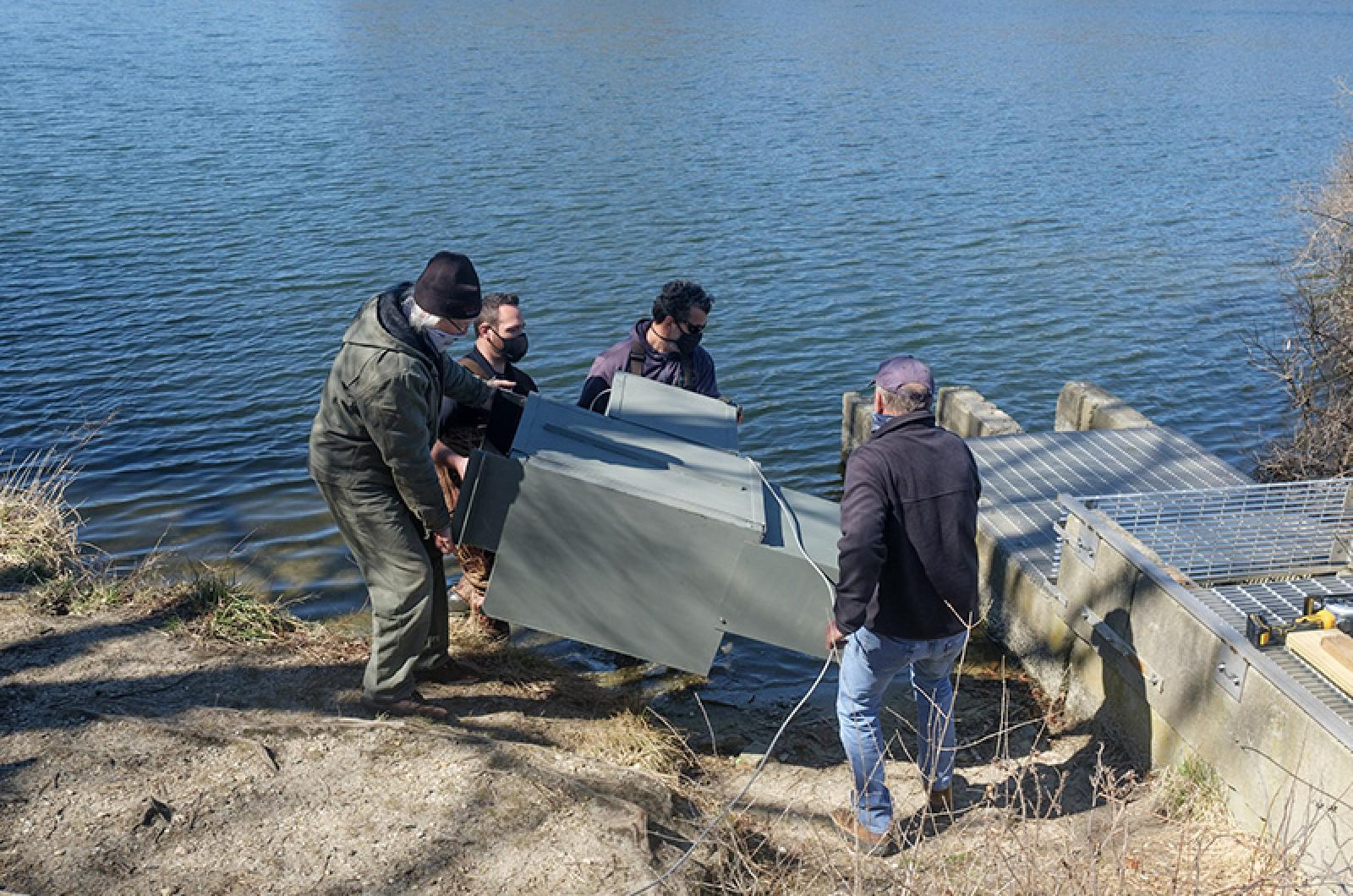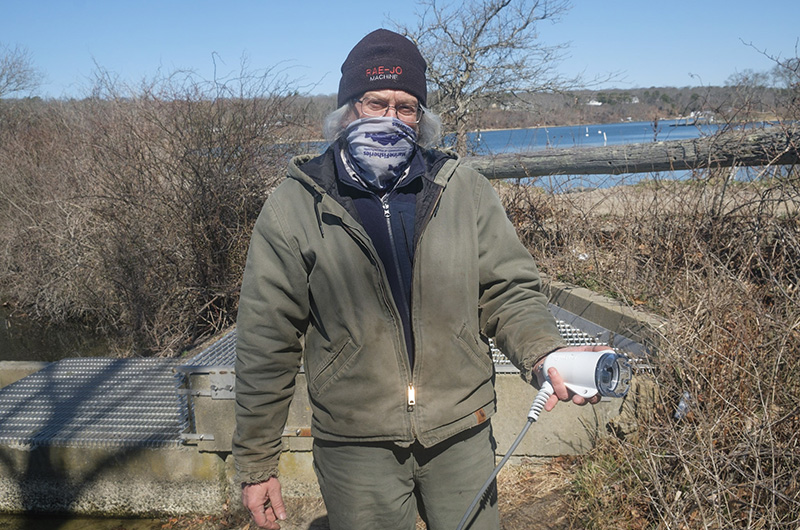On a brisk spring morning Tuesday, shellfish constables from Oak Bluffs and Vineyard Haven, town officials and DMF biologists and carpenters gathered at the mouth of the Richard Madeiras herring run in Lagoon Pond to install a 24-hour herring cam, drawing the occasional fisherman and passerby to watch as they worked.
The motion-detecting herring cam records fish movement day and night, and the images will be compiled by a fish-counting software called Salmon Soft. The goal is to produce a census of the pond’s herring population, which over the years has seen a long decline.
The camera was installed by the state Division of Marine Fisheries in a project spearheaded jointly by the Massachusetts DMF, the Oak Bluffs Water District and the Tisbury and Oak Bluffs shellfish departments.
Brad Chase, a biologist and leader of the diadromous fish program at the DMF, said the camera will help the towns monitor their herring population when the fish migrate from ocean waters to the freshwater pond each spring.
“The interest is to learn what’s going on with the population,” Mr. Chase said.
Herring are a migratory fish found in the North Atlantic. Like salmon, they are born in freshwater ponds but live most of their lives in ocean waters until they migrate back to their birthplace to spawn.
The species is crucial to pond ecology, bringing an array of nutrients from the ocean each year, as well as culturally symbolic — particularly in indigenous communities — and have long played a key role in food production.
On the Island, the fish often return in large pulses and proliferate the Island’s many freshwater ponds, with major runs in Squibnocket Pond, Mill Brook and James Pond.
The Lagoon Pond underwater camera sits in a custom, tunnel-like box designed by Mr. Chase and his DMF team, while the entire contraption is nestled into place at the mouth of the run.
“It’s fisheries management, [educational] outreach, and also just learning what your population is,” said Mr. Chase of the project’s goal. “Hopefully, with all this work they’ve done to improve the fishway...they’ll have an increased population and this will document that.”
The Lagoon Pond camera is one of seven video counters in the state, Mr. Chase said. A similar 24-hour device was installed on the Island by the Wampanoag tribe in 2016 as a method of monitoring the herring population as it runs between Menemsha and Squibnocket ponds.
Tisbury shellfish constable Danielle Ewart, who helped lead Tuesday’s installation, said the Lagoon Pond project began a few years ago with a Community Preservation Committee grant to renovate the run’s worn wooden baffles and install a new ladder and grates. But the plan has since evolved into a larger project to monitor the pond’s declining herring stock.
Lagoon Pond borders both Oak Bluffs and Vineyard Haven, with a dividing line down the middle. The run sits on Oak Bluffs Water District property but both shellfish departments are the wardens of the herring, Ms. Ewart said.
Once harvested in large numbers on the Island and across the state, herring were banned from fishing in 2006 after the stock declined. The moratorium applies to both commercial and recreational use, with exceptions only for offshore bycatch and tribal harvests.
Since the ban, herring stock has seen modest population increases, said Mr. Chase, noting a few peak years between 2012 and 2014. Many commonwealth towns have begun monitoring their herring populations, but concrete data on population size and stock health is hard to pin down.
The new camera will play a crucial role in that data collection, shedding light on how environmental factors like climate, predation and food sources impact the pond’s herring stock, Mr. Chase said.
The project has also opened the door to the possibility of reinstating a sustainable harvest in the pond.
“This type of data collection allows you over time to correlate environmental variables to your run-cam...The longer the time, the better the data is,” said Mr. Chase. “It’s really kind of exciting to think of where we’ll be 10 or 20 years from now.”
With the camera box installed and the software dialed up, town environmental officials said they planned to test out the technology this year, with the possibility of live-streaming the camera feed to the public.
On Tuesday, as the wind whipped and birds chirped overhead, signs of spring were all around. Mr. Chase said his team already saw a few herring in the pond that morning making their annual pilgrimage home.
“I think there are some fish here,” he said. “It should be any day now that they’ll have the images.”






Comments
Comment policy »